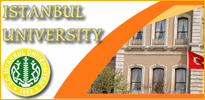Brazil: Education
Brazil Education Profile 2012
A few years ago, Brazil still had a fairly cost-ineffective education system, plagued by poor and inequitable academic achievement. Significant improvements have been achieved in recent years, but progress with respect to the quality of education at both the elementary and secondary levels is slow. Today Brazil spends 4.3% of GDP on education, but spending per student is low given the youthful population skew, the large amount of resources directed toward tertiary education and high spending on teacher’s pensions. The educational system suffers from the highest repetition rate in Latin America and low education attainment. Individuals more than 15 years old have on average only 4.8 years of schooling. The situation is worse for the poor, who tend to enter the system late, leave early and repeat more grades. By age 15, poor youths have completed three years less schooling than the non-poor. The quality of education is a key issue: Over half of Brazil’s 15-year-old students are functionally illiterate and close to 80% fail to perform at basic levels of mathematical competency. The situation is even worse considering that these tests don’t include those who are not attending school.
The Lula administration has prioritized the democratization of access to education at all levels by means of the Literacy Brazil program. In 2006, the government implemented a reform which extended primary education from eight to nine years in an attempt to improve the accessibility of education for the poor. As a result, the total length of primary and secondary education in Brazil increased from 11 to 12 years. Additionally, the government established the Fund for the Maintenance and Development of Basic Education (FUNDEB) to close the gap between the quality of education in public and private schools. In May 2007, President Lula launched an ambitious education development plan (PED), which aims to redress Brazil’s long-standing education deficit within 15 years. The plan establishes a results-based education system for the first time in Brazil’s history. Schools have to achieve targets set by the government in order to receive more resources. The government introduced a basic education development index to measure the quality of education in state schools. The index is based on a school pass rate, and on the performance of pupils in a test of knowledge. The PED conditions the disbursement of public funds to state schools on the schools’ performance. The government set aside $500 million for the PED in 2007 and a further $3 billion for the 2008 – 2010 period. The PED is also aimed at high schools and continuing education.
Education in Brazil is regulated by the Federal Government of Brazil, through the Ministry of Education, which defines the guiding principles for the organization of educational programs, but does not establish such programs just like the United States. Local governments are responsible for establishing local educational programs following the guidelines and using the funding supplied by the Federal Government. Brazilian children must attend school a minimum of 8 years, but the schooling is usually inadequate.
The 1988 Brazilian Constitution states that "education" is "a right for all, a duty of the State and of the family, and is to be promoted with the collaboration of society, with the objective of fully developing the person, preparing the individual for the exercise of citizenship and qualifying him/her for work".
The National Educational Bases and Guidelines Law enacted in 1961 says that, "national education, inspired in the principles of freedom and in the ideals of human solidarity, has the purpose of:
- * understanding individual rights and responsibilities, as well as those of citizens, the State and other community groups;
- * respecting man's dignity and fundamental freedoms;
- * strengthening national unity and international solidarity;
- * integral development of the human personality and his/her participation in the work towards common welfare;
- * preparing individuals and society to master scientific and technological resources which will allow the use existing possibilities to common welfare;
- * protecting, disseminating and expanding cultural heritage;
-
* condemning any unequal treatment resulting from philosophical, political or religious belief, as well as any social classes or racial prejudices.
Awareness of the importance of investment in R&D has increased during the past decade. R&D expenditures (both public and private) account for about 1% of GDP; research and development programs are carried out predominantly by the government and public universities. Most scientists work in public universities and research institutions, rather than in the business sector. Innovation performance is improving, and innovation policy is beginning to focus on the potential synergies between science and technology promotion, R&D support, and trade competitiveness. But Brazil’s main challenge in innovation policy is to encourage the business sector to engage in innovative productivity-enhancing activities. The government must boost innovation in the private sector and encourage university-business ventures so as to convert knowledge into productivity gains at the enterprise level. It also must implement measures aimed at tackling the shortage of skills in the labor force, as new studies show a widening gap in tertiary educational attainment with respect to the OECD area.
Primary education is free and compulsory for children aged 7 through 14. Adequate facilities are lacking in some areas, however, and the law is difficult to enforce. The government maintains some secondary schools, but the majority are private. Many students enroll in vocational secondary schools to prepare for commercial, industrial, or agricultural jobs. The literacy rate is about 80 per cent. Brazil has both public and private universities. The Federal University of Rio de Janeiro (founded in 1920) and the University of São Paulo (1934) are the largest.
The Brazilian educational system is decentralized and composed of public and private institutions. The Ministry of Education (MEC) control education at the national level, supported by the National Council of Education. Education is compulsory for all children aged 6-14 years and is divided into basic education (child education, basic education and middle) and higher. Public education is free at all levels e responsibility is divided between the states, the District and municipalities.
Education levels are constituted by:
- basic education (which includes early childhood education, basic education and income) and higher education.
The school year is divided into two semesters: the first begins in March and ends in mid-July and the second begins in August and ends in mid-December. The winter holidays are held in July and summer than in December.
The child is education in kindergartens for children aged 0-3 years and preparatory schools for children from 4 to 5 years. Basic education lasts at least nine years, and it is compulsory and free in public schools. On average, the last stage of basic education, lasts at least three years and reflects the general education student.
It may include programs of general preparation for employment and vocational training. Higher education includes undergraduate, with a duration of 4 to 6 years, and graduate students, ranging from 2 to 4 years for master's, and 4 to 6 years for the doctorate. The federal government has at least one university in each state of the federation.
Due to the large demand for higher education and the lack of seats, the faculties and universities in Brazil, both public and private, require an entrance exam called "vestibular".
As a large middle-income country, Brazil still has several underdeveloped regions. Its educational system is accordingly plagued by many deficiencies and racial and regional disparities.
As of 2006:
- * Literacy rate of 90.2% for people aged 15 or older
- * 7.2 years of formal education, on average.
8.4 years for white people, 6.1 years for black people
5.1 years in the Northeast versus 7.2 years in the Southeast and 6.9 years in the South.
As of 2006:
* The nation invests 4.3% of GDP on Education - the federal government aims to increase gradually this number to 7%.
As of 2008:
- * Literacy rate of 97.5% for people aged 6 to 14
- * Literacy rate of 84.1% for people aged 15 to 17
- * Iliteracy rate of 92.0% of Brazil.
Brazilian education level is considered low compared to developed countries, especially in public schools, despite of many private schools also have low level.
Organization and structure
Education is divided into three levels, with several grades in each division. Fundamental education (the first educational level) is free for everyone (including adults), and mandatory for children between the ages of 6-14. Secondary education is also free, but it is not mandatory. Higher education (including graduate degrees) is free at public universities.
Pre-School education (Educação Infantil)
Pre-School education is entirely optional, and exists to aid in the development of children under 6. It aims to assist in all areas of child development, including motor skills, cognitive skills, and social skills while providing fertile ground for the later acquisition of knowledge and learning. There are day nurseries for children under 2, kindergartens for 2-3 year olds, and preschools for children 4 and up.
Fundamental Education (Ensino Fundamental)
Fundamental Education is mandatory for children ages 6-14. There are 9 "years" (as opposed to the former 8 "grades"). [9] The current "First Year" broadly corresponds to the former Pre-School last year of private institutions, and its aim is to achieve literacy. Generally speaking, the only prerequisite for enrolling in first year is that a child should be 6 years old, but some educational systems allow children younger than 6 to enroll in first year (as long as they turn 6 during the first academic semester). Older students who, for whatever reason have not completed their fundamental education are allowed to attend, though those over 18 are separated from the younger children.
The Federal Council of Education (Conselho Federal de Educação) sets a core curriculum consisting of Portuguese, History, Geography, Science, Mathematics, Arts and Physical Education (for years 2, 3, 4 and 5). As for years 6, 7, 8 and 9, one or two foreign languages are also compulsory (usually English and also Spanish).
Each educational system supplements this core curriculum with a diversified curriculum defined by the needs of the region and the abilities of individual students.
Fundamental Education is divided in two stages, called Ensino Fundamental I (years 1-5) and Ensino Fundamental II (years 6-9). During Ensino Fundamental I each group of students is usually assisted by a single teacher. As for Ensino Fundamental II, there are as many teachers as subjects.
The length of the school year is set at at least 200 days by the National Education Bases and Guidelines Law (Lei de Diretrizes e Bases da Educação). Fundamental schools must provide students with at least 800 hours of activities per year. The actual school calendar is set by individual schools which, in rural areas, often organize their calendar by sowing and harvesting seasons.
Secondary Education (Ensino Médio)
Secondary education takes 3 years. The minimum is 2,200 hours of coursework over 3 years. Students must have finished their Fundamental education before they are allowed to enrol the Ensino Médio. Secondary education core curriculum comprises Portuguese (including Portuguese language, Brazilian and Portuguese literatures), foreign language (usually English, also Spanish and very rarely French today), History, Geography, Mathematics, Physics, Chemistry and Biology. Recently Philosophy and Sociology, which were banned during the military dictatorship (1964-1985), became compulsory again.
It is possible to take professional training along with mainstream Secondary education. Such trainings usually last 2 years and can be taken during the 2nd and 3rd years of Secondary education. Some Secondary schools provide professional training in Agriculture. Such schools usually have a greater amount of instruction hours per week and the complete course lasts 3 or 4 years.
Higher Education (Ensino Superior)
Secondary education is mandatory for those wishing to pursue higher education. In addition, students must pass a competitive entrance examination (known as vestibular) for their specific course of study. The number of candidates per available place in the freshman class may be in excess of 30 or 40 to one in the most competitive courses at the top public universities.
Higher education in Brazil, as in many nations, can be divided into both undergraduate and graduate work. In addition to providing education, Universities promote research and provide stand-alone classes to the community.
The standard Brazilian undergraduate bachelor's degree (graduação) is awarded in most fields of arts, humanities, social sciences, mathematical sciences, or natural sciences, and normally requires 4 years of post-secondary studies at a certified university. Students interested in teaching careers at secondary schools can take an additional year in lecturing courses (licenciatura). Five-year degrees are awarded in the so-called professional careers such as architecture, engineering, veterinary medicine, and law. The undergraduate degree in medicine requires in turn six years of full-time post-secondary studies. Residência, a two-to-five years internship in a teaching hospital is not required, but it is pursued by many professionals, especially those who wish to specialize in a given area.
Students who hold a four-year bachelor's degree or a five-year professional diploma are qualified for admission into graduate school (pós-graduação). Graduate master's degrees are normally awarded following the completion of a two-year program requiring satisfactory performance in a minimum number of advanced graduate courses (typically between five and eight classes), plus the submission by the degree candidate of a master's thesis (dissertação de mestrado) that is examined by an oral panel of at least three faculty members, including at least one external examiner. Doctoral degrees on the other hand normally require four years of full-time studies during which the degree candidate is required to complete further advanced graduate coursework, pass a doctoral qualifying exam, and submit an extensive doctoral dissertation (tese de doutorado) that must represent an original and relevant contribution to current knowledge in the field of study to which the dissertation topic belongs. The doctoral dissertation is examined in a final public oral exam administered by a panel of at least five faculty members, two of whom must be external examiners. Results from the dissertation are normally expected to be published in peer-reviewed journals, proceedings of international conferences, and/or in the form of books/book chapters.
Teacher training and qualification
Teacher training is available at both secondary schools and universities, depending on what grades one desires to teach. A 3-year course in a secondary school will qualify prospective teachers to teach the first 4 grades of elementary school. A 3-4 year secondary school degree plus an additional year of training qualifies one to teach grades 5 and 6. A university degree is required however to qualify an individual to teach High School classes (i.e. grades 10-12 in the new 12-year school system, 9-11 in the old system). There are frequent programs for teachers to update their skills.






















